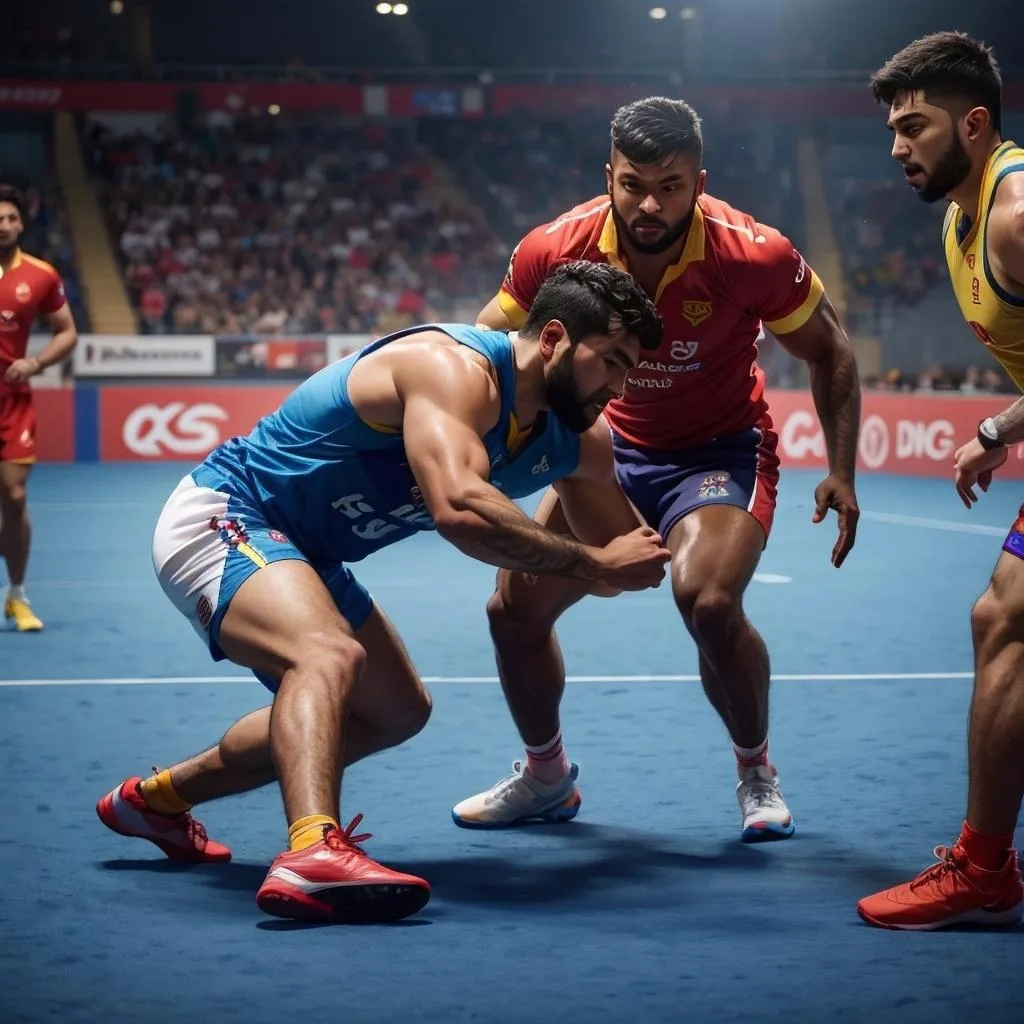
Kabaddi, a sport with a rich history dating back thousands of years, has come a long way since its origins in ancient India. Played in various versions throughout South Asia, kabaddi has gained immense popularity worldwide, particularly with the advent of the VIVO Pro-Kabaddi League (PKL).
Origins and Evolution of Kabaddi
The game of kabaddi originated 4,000-5,000 years ago in Tamil Nadu, India, where it was believed to be a way of training people to attack and defend in groups for fighting and hunting purposes. Its simplicity and focus on solitary attack and group defense have remained unchanged throughout the centuries, with regional differences in the game’s versions.
In the 1920s, an official ruleset for the version of kabaddi played in the PKL was formalized and published by an Indian committee. The sport’s popularity grew over the years, leading to international matches and the first Asian Kabaddi Championship in 1980. Kabaddi was later introduced to the Asian Games, and in the early 2000s, the Kabaddi World Cup was launched.
Rules and Gameplay
Kabaddi matches run for 40 minutes, split into two halves of 20 minutes, with seven players on the court and between three to five substitutes. The sport is played on mats that measure 33 ft × 43 ft for senior men events and 26 ft × 39 ft for women. The game involves two teams occupying opposite halves of the court, with raiders trying to tag members of the opposing team and return to their half without being caught.
Emergence of Professional Kabaddi
Professional kabaddi is relatively new, starting after 2008, with the launch of the VIVO Pro-Kabaddi League in India during 2014. The league was immediately popular, bringing in 435 million television viewers, making it India’s second most popular sport behind cricket. Since then, kabaddi has consistently ranked as India’s fastest-growing sport, with the number of franchises expanded to 12 teams in 2022, making the PKL the Indian sports league with the most franchises.
The success of the PKL has attracted top talent and large sums of money, with players like Pardeep Narwal, Pawan Sehrawat, and Rahul Chaudhuri becoming legitimate celebrities with enviable lifestyles. The excitement surrounding kabaddi has also helped boost the profile of other competitions. The Kabaddi World Cup was held again in 2016 after being dormant for nine years, with India emerging as world champions.
Women’s Kabaddi
Professional female kabaddi rose in popularity with the Women’s Kabaddi Challenge, which gave young girls strong role models. However, the Women’s Kabaddi Challenge did not become a permanent fixture like the PKL. A fully-fledged professional women’s kabaddi league is set to launch in Dubai for 2023, further expanding the sport’s reach and influence.
International Growth and Olympic Dreams
The International Kabaddi Federation, players, and enthusiasts alike have the goal of seeing kabaddi become a fully-fledged Olympic sport. However, kabaddi is not close to achieving the requirements for Olympic qualification. Nevertheless, the sport continues to grow, with a fully-fledged professional women’s kabaddi league set to launch in Dubai for 2023.
The men’s game looks set to continue its incredible trajectory thanks to the ever-popular VIVO Professional League and growing interest around international competitions. Iran’s recent victory in both the men’s and women’s kabaddi events at the Asia Games highlights the sport’s increasing competitiveness and excitement. Kabaddi’s international appeal is only set to grow.
In conclusion, kabaddi has evolved from its ancient origins to become a fast-growing sport with a global audience. The VIVO Pro-Kabaddi League has played a significant role in this growth, attracting millions of viewers and expanding to 12 franchises. With the continued development of the sport, both in men’s and women’s competitions, kabaddi’s future looks bright, and its international appeal will undoubtedly continue to increase.